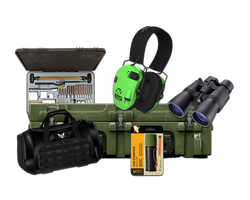How to Store Sleeping Bags: Essential Tips for Long-Lasting Performance
Table of Contents
- Introduction
- Understanding the Importance of Proper Storage
- Best Practices for Storing Sleeping Bags
- Preparing Your Sleeping Bag for Long-Term Storage
- Conclusion
- FAQs
Introduction
Have you ever noticed how your sleeping bag seems to lose its warmth over time, leaving you shivering on chilly nights? This could be due to improper storage. Sleeping bags are essential gear for any outdoor adventurer, whether you're camping under the stars or hiking through rugged terrain. However, many people overlook the importance of storing these vital items correctly, which can significantly impact their performance and lifespan.
The significance of proper sleeping bag storage cannot be overstated, especially as outdoor enthusiasts prepare for their next adventure. A sleeping bag that is maintained well will not only last longer but will also provide the warmth and comfort you need when it matters most. This blog post will guide you through the best practices for storing sleeping bags, ensuring they remain in peak condition for every excursion.
By the end of this article, you will learn why storage matters, the best storage methods for different types of sleeping bags, and how to prepare your bag for long-term storage. We will also provide practical tips and recommendations to help you maximize your gear's longevity. So, whether you’re a casual camper or a seasoned survivalist, read on to discover how to store sleeping bags effectively.
Understanding the Importance of Proper Storage
The Impact of Improper Storage
When it comes to sleeping bags, improper storage can lead to a loss of insulation, resulting in reduced warmth and comfort. Sleeping bags are designed with insulation materials—either down or synthetic—that provide loft and warmth. Storing them in a compressed state for extended periods can crush these materials, causing them to lose their ability to trap heat.
For example, if you store your down sleeping bag in a tightly packed compression sack for months, the down feathers can become matted and lose their loft. Similarly, synthetic materials can also be damaged from prolonged compression, leading to cold spots in the bag. Both scenarios can leave you unprepared for cold nights in the wilderness.
Benefits of Proper Storage
Proper storage techniques can significantly extend the life of your sleeping bag. By ensuring your bag retains its shape and insulation properties, you’ll enjoy the following benefits:
- Enhanced Warmth: A well-stored sleeping bag maintains its insulation, ensuring warmth and comfort during your outdoor adventures.
- Increased Lifespan: Taking care of your gear through proper storage means you won’t have to replace it as frequently, saving you money in the long run.
- Readiness for Use: When your sleeping bag is stored correctly, it’s always ready for your next camping trip or emergency situation, providing peace of mind.
Key Storage Considerations
When considering how to store sleeping bags, keep the following factors in mind:
- Type of Insulation: Understand whether your sleeping bag is filled with down or synthetic insulation, as each type has different storage requirements.
- Storage Environment: The conditions in which you store your sleeping bag—temperature, humidity, and exposure to pests—can all impact its integrity.
- Frequency of Use: If you frequently use your sleeping bag, consider a more accessible storage method that allows for quick access while still protecting your gear.
Best Practices for Storing Sleeping Bags
1. Choose the Right Storage Method
When it comes to sleeping bag storage, there are several effective methods. The choice of method often depends on the type of sleeping bag you own.
For Down Sleeping Bags
- Use a Large Storage Sack: If your down sleeping bag came with a larger cotton storage sack, use it. These sacks allow the down to breathe and keep it lofted. If you don't have one, consider purchasing a breathable storage bag to protect your investment.
- Avoid Compression: Never store your down sleeping bag in a compression sack for long periods. Instead, aim to keep it loosely packed or uncompressed to maintain insulation.
For Synthetic Sleeping Bags
- Cotton Storage Bag or Laundry Bag: Just like with down bags, synthetic bags benefit from being stored in a breathable cotton or mesh laundry bag. This allows airflow and prevents moisture buildup.
- Consider Hanging: If space allows, hanging your synthetic sleeping bag can keep it lofted and uncompressed. Use a hanger or a hook in your closet to avoid damage to the insulation.
2. Temperature and Humidity Control
Ideal Storage Conditions
Store your sleeping bag in a cool, dry place away from direct sunlight. Excessive heat and humidity can degrade the insulation material over time. Consider using:
- Temperature-Controlled Environment: A climate-controlled room is ideal for storage, as it helps maintain consistent temperatures and humidity levels.
- Desiccants: If you live in a humid area, consider placing silica gel packets or other desiccants in your storage area to absorb moisture.
3. Handling Techniques
Stuffing vs. Rolling
When preparing your sleeping bag for storage, how you pack it can make a significant difference:
- Stuffing: Instead of rolling your sleeping bag tightly, use a stuffing method. This technique allows you to avoid creating permanent creases and keeps the insulation from being compressed in the same areas repeatedly.
- Avoid Folding: If possible, avoid folding your sleeping bag in the same spots each time, as this can create weak points in the insulation.
4. Protecting Against Pests
Pest Prevention
A sleeping bag can attract pests like moths, rodents, and other insects. To protect your gear:
- Use Airtight Containers: If you live in an area prone to pests, consider storing your sleeping bag in an airtight plastic container to keep unwanted guests away.
- Natural Deterrents: Cedar chips or lavender sachets can deter pests while providing a pleasant scent.
Preparing Your Sleeping Bag for Long-Term Storage
Cleaning Your Sleeping Bag
Before storing your sleeping bag for an extended period, ensure it is clean and dry. Follow these steps:
- Check the Care Label: Always refer to the manufacturer's care instructions for washing and drying your sleeping bag.
- Wash Gently: Use a front-loading washing machine on a gentle cycle with a mild detergent. Avoid top-loading washers, as they can be too rough on the fabric and insulation.
- Dry Thoroughly: After washing, dry your sleeping bag on a low heat setting. Adding dryer balls or clean tennis balls can help fluff the insulation while drying.
Inspecting for Damage
Take a moment to inspect your sleeping bag for any signs of wear and tear. Look for:
- Zipper Functionality: Ensure the zipper operates smoothly and does not snag on the fabric.
- Fabric Integrity: Check for any rips, holes, or seams that may need repair. Addressing these issues early can prevent further damage.
Final Preparations
Once your sleeping bag is clean and dry, follow these steps for final preparations before storage:
- Stuff or Fold: Depending on your chosen storage method, either stuff the sleeping bag loosely into its storage sack or lay it flat in a breathable container.
- Label If Necessary: If you have multiple sleeping bags, consider labeling the storage bags for easy identification.
- Store in a Suitable Location: Place the sleeping bag in a designated storage space that meets the temperature and humidity requirements discussed earlier.
Conclusion
Proper storage of your sleeping bag is crucial for maintaining its performance, comfort, and longevity. By choosing the right storage methods, controlling the environment, and preparing your bag for long-term storage, you can ensure that your sleeping bag remains in peak condition for years to come.
Remember, a well-cared-for sleeping bag will provide you with the warmth and comfort you need during your outdoor adventures, allowing you to focus on enjoying nature rather than worrying about your gear. So, whether you're preparing for a weekend camping trip or storing your bag for the off-season, follow these guidelines to maximize its lifespan.
As you gear up for your next adventure, consider joining the Crate Club community, where you can discover curated tactical gear and survival tools delivered monthly. Explore our subscription services to find the perfect package for your needs.
FAQs
Q: Can I store my sleeping bag in its compression sack?
A: It is not advisable to store your sleeping bag in a compression sack for long periods, especially if it's a down sleeping bag. Instead, use a breathable storage sack or hang it to maintain its loft.
Q: What is the best way to clean my sleeping bag before storage?
A: Always refer to the manufacturer's care label. Generally, washing in a front-loading machine on a gentle cycle with mild detergent and drying on low heat is recommended.
Q: How can I prevent pests from damaging my sleeping bag during storage?
A: Store your sleeping bag in an airtight container and consider using natural deterrents like cedar chips or lavender sachets to keep pests away.
Q: How often should I check on my sleeping bag while it's stored?
A: It’s a good idea to check on your sleeping bag at least once a season to ensure it remains dry, clean, and free from pests.
Q: Can I hang my sleeping bag for storage?
A: Yes, hanging your sleeping bag can be an effective way to keep it lofted and uncompressed. Use a hanger or hook in a suitable area for storage.
Share this article



